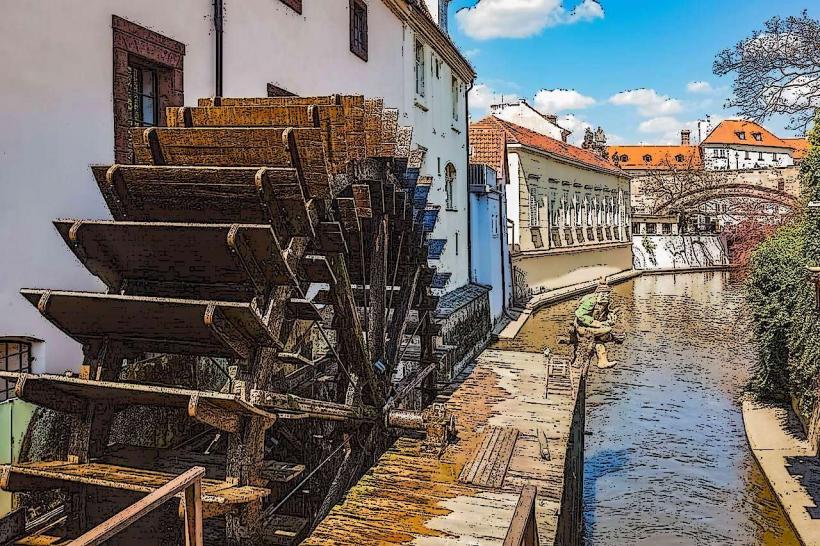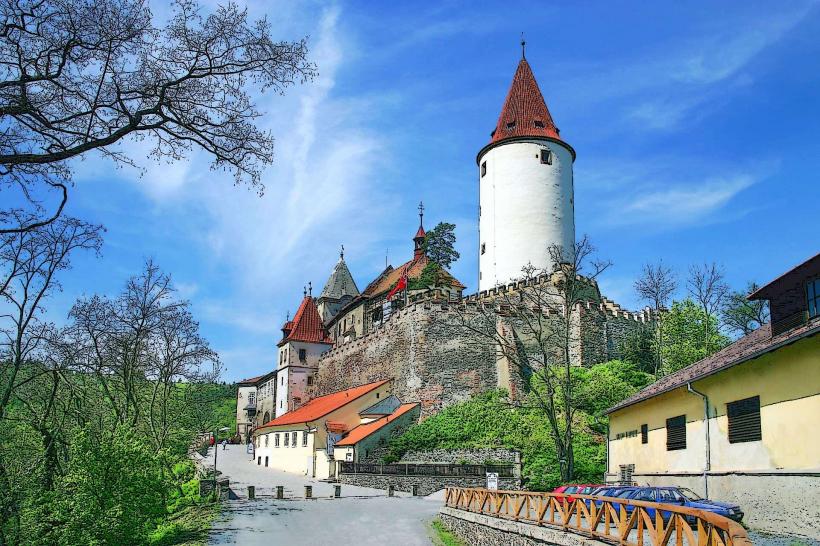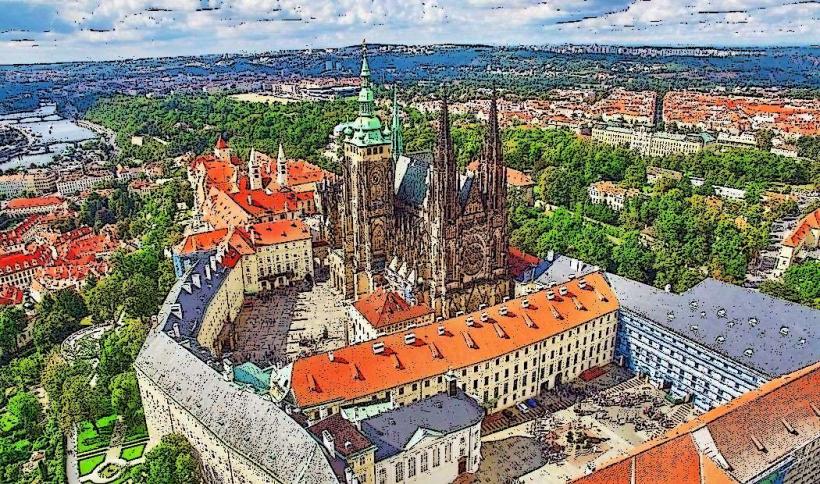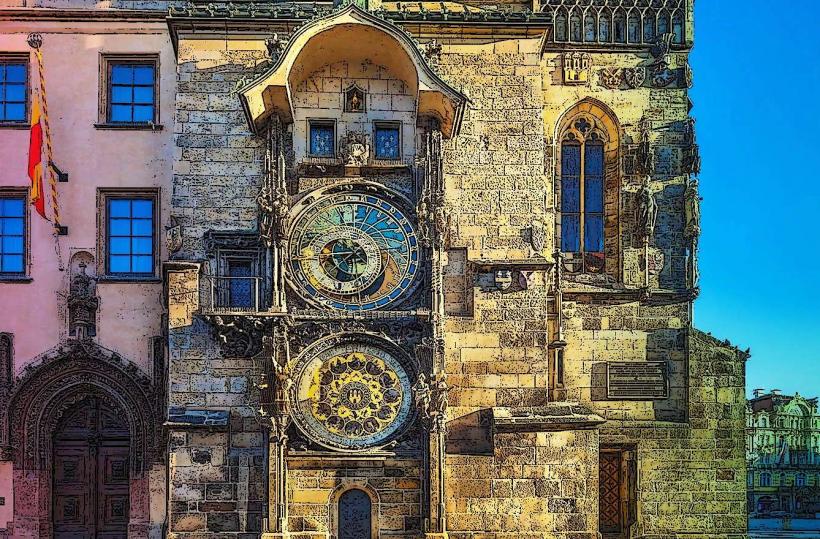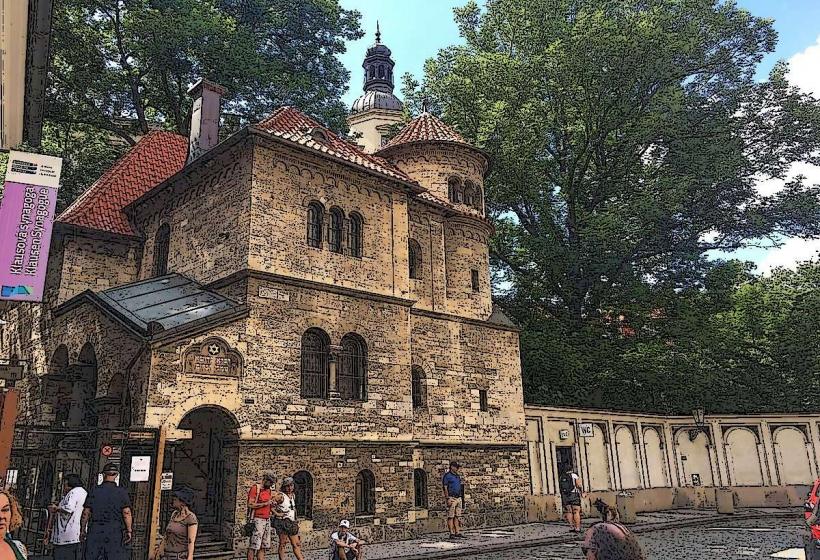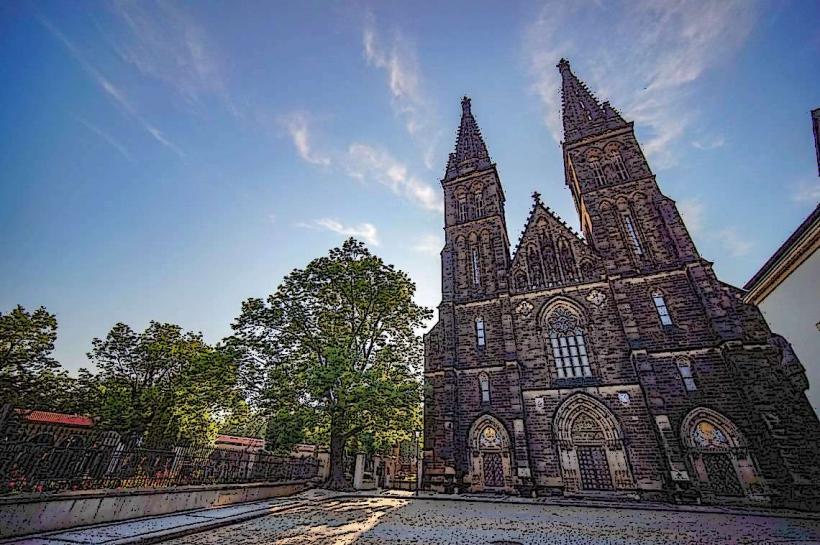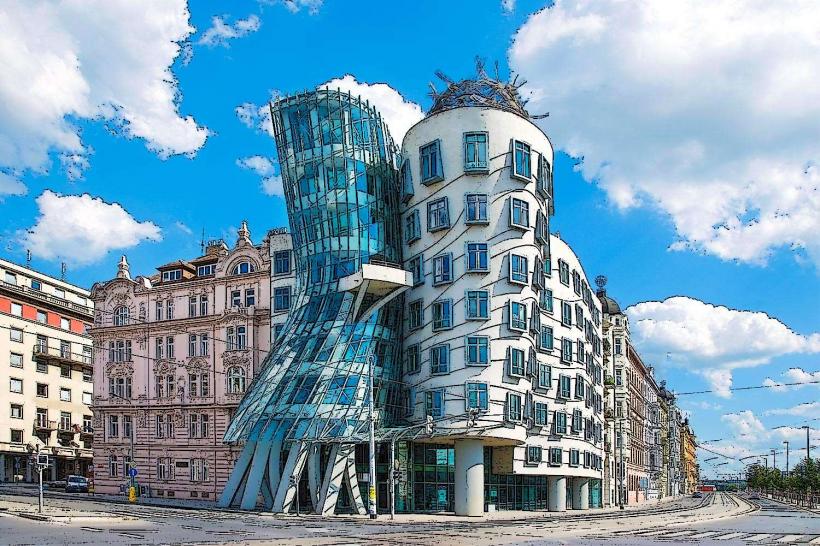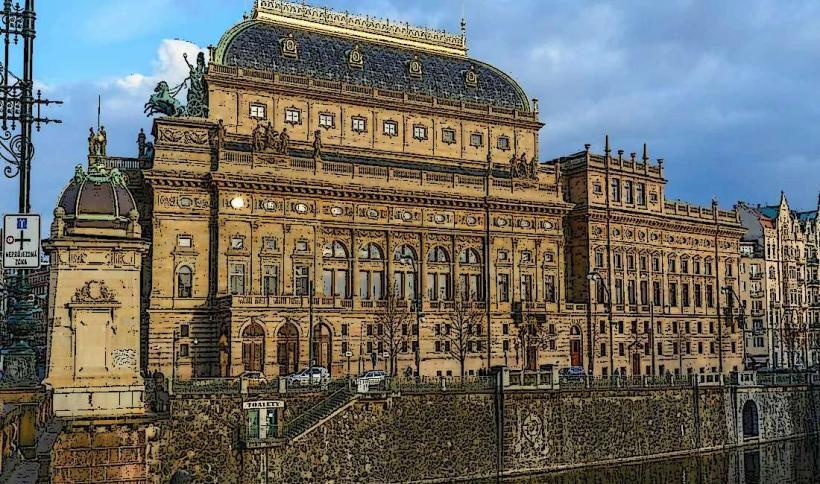Information
Landmark: St. Vitus CathedralCity: Prague
Country: Czech Republic
Continent: Europe
St. Vitus Cathedral (Katedrála svatého Víta) – Detailed Overview
The St. Vitus Cathedral (Czech: Katedrála svatého Víta) is one of Prague's most iconic landmarks, a stunning example of Gothic architecture and a key part of the Prague Castle complex. It is the most important church in the Czech Republic, serving as the seat of the Archbishop of Prague and the final resting place for many of the nation’s kings, queens, and saints. The cathedral's grand size, intricate design, and historical significance make it one of the most visited and admired monuments in Prague.
Historical Background
The construction of St. Vitus Cathedral began in 1344, during the reign of Charles IV, who was also the Holy Roman Emperor. It was originally intended to be the coronation church for the kings of Bohemia and a symbol of the power and prestige of the Czech kingdom.
Foundation and Early Construction: The first foundation stone was laid by Charles IV on November 21, 1344, although the initial design for the cathedral was quite different from what we see today. The first architect, Matthias of Arras, began the work but died in 1352, and was succeeded by Peter Parler, who refined and expanded the cathedral's design in the late 14th century.
Completion and Modifications: Due to the scale of the project, construction took centuries. The cathedral was not fully completed until 1929. Over the centuries, different architectural styles were incorporated into its design, including Gothic, Renaissance, and Baroque elements.
Significance: St. Vitus Cathedral became the coronation church for the kings and queens of Bohemia and an important pilgrimage site. It was also a symbol of Czech nationalism during the 19th century.
Architectural Highlights
St. Vitus Cathedral is renowned for its awe-inspiring Gothic design, which combines soaring arches, intricate stained glass windows, and monumental towers. Its architectural features include:
1. Gothic Design
St. Vitus Cathedral is a prime example of Gothic architecture, with its pointed arches, ribbed vaults, and flying buttresses. The cathedral's design emphasizes verticality, with the architecture aiming to draw the eyes upward toward the heavens.
- Layout: The cathedral has a Latin cross layout, with a long nave and a short transept. The building measures over 124 meters in length and the towers rise to about 96 meters.
- Towers: The cathedral’s two main towers are among its most prominent features, with the South Tower being slightly taller than the North Tower. The towers are topped with pinnacles and gargoyles typical of the Gothic style.
2. Stained Glass Windows
One of the most striking features of St. Vitus Cathedral is its stained glass windows, which were created by some of the finest artisans of the time. The windows depict biblical scenes, saints, and events from Czech history.
The Rose Window: Located above the main entrance, the cathedral’s famous Rose Window is a masterpiece of medieval stained glass. Its intricate design represents the Last Judgment, with vivid colors and details that reflect the skills of the medieval glaziers.
The Windows of the Nave: The nave’s windows, including the large St. Wenceslas Window, are particularly famous. The St. Wenceslas Window was created by Alfons Mucha, one of the leading Czech artists of the Art Nouveau period, and it is a powerful symbol of Czech national identity.
3. The Golden Portal
The Golden Portal (Czech: Zlatá brána) is the cathedral's main entrance, which is a stunning example of Romanesque and Gothic styles. The portal features a relief of Judgment Day, as well as a series of biblical scenes. The door itself is made of bronze and has gilded decorations that give it its name.
4. The Royal Crypt and Tombs
St. Vitus Cathedral houses a royal crypt where the kings, queens, and other notable members of the Bohemian royal family are buried. Some of the notable tombs include:
St. Wenceslas: The cathedral is home to the tomb of St. Wenceslas, the patron saint of the Czech Republic. His tomb, located in a chapel at the east end of the cathedral, is marked by a beautiful altar and silver tombstone.
Other Royals: The crypt contains the tombs of other important historical figures, such as Charles IV and his son Wenceslas IV, as well as several Habsburg monarchs.
5. The Chapel of St. Wenceslas
This gothic chapel is dedicated to St. Wenceslas, the patron saint of the Czech nation. It is located in the eastern part of the cathedral and contains his tomb. The chapel is a focal point of pilgrimage and is particularly famous for its rich decoration, including the altar, stained-glass windows, and golden details.
- St. Wenceslas Chapel is decorated with mosaics, including an impressive mosaic of Christ that adorns the chapel’s vaulted ceiling.
6. The Czech Crown Jewels
The Czech Crown Jewels are kept in a special chamber in St. Vitus Cathedral. The jewels, including the Crown of St. Wenceslas, are used in the coronation of the kings and queens of the Czech Republic.
- The Crown of St. Wenceslas is one of the most important symbols of Czech sovereignty and dates back to the 14th century. The crown is displayed in a special locked chamber in the cathedral, which can be viewed by visitors on a guided tour.
7. The 14th-Century Choir
The cathedral’s choir is one of the finest examples of Gothic interior design. The seats and stone carvings are incredibly detailed, showcasing the craftsmanship of the medieval builders. The choir is often used for liturgical services and musical performances.
Art and Decoration
St. Vitus Cathedral is rich in art and decoration, reflecting its religious significance as well as its historical importance to the Czech people.
- Altar Pieces: The cathedral contains a number of altarpieces, including some significant works by Czech artists.
- Sculptures: The cathedral’s interior and exterior are adorned with a variety of sculptures, including biblical scenes and saints, with a combination of Gothic and later Baroque influences.
Visitor Experience
Visitors to St. Vitus Cathedral can explore its grand interior, view its impressive stained glass windows, and learn about the history of the church and the Czech monarchy. Here are some key aspects of visiting the cathedral:
Tours: Guided tours are available for those who want to learn more about the history, architecture, and significance of the cathedral. Visitors can also explore the Royal Crypt, the St. Wenceslas Chapel, and the Treasury, which houses the Czech Crown Jewels.
Climbing the Towers: Visitors can climb to the top of the South Tower for a spectacular panoramic view of Prague and the surrounding areas, including Prague Castle, Charles Bridge, and the Vltava River.
Events and Services: The cathedral is still an active place of worship and hosts regular services, including masses, concerts, and special events. It also holds important events related to Czech national holidays and royal ceremonies.
Conclusion
St. Vitus Cathedral is not only an architectural masterpiece but also a symbol of the Czech people’s rich history and their enduring connection to Christianity and national identity. Its Gothic grandeur, rich decorations, and historical significance make it an essential stop for anyone visiting Prague. Whether admiring its stained glass windows, exploring its royal tombs, or simply taking in the breathtaking views from its towers, St. Vitus Cathedral is an unforgettable experience.

